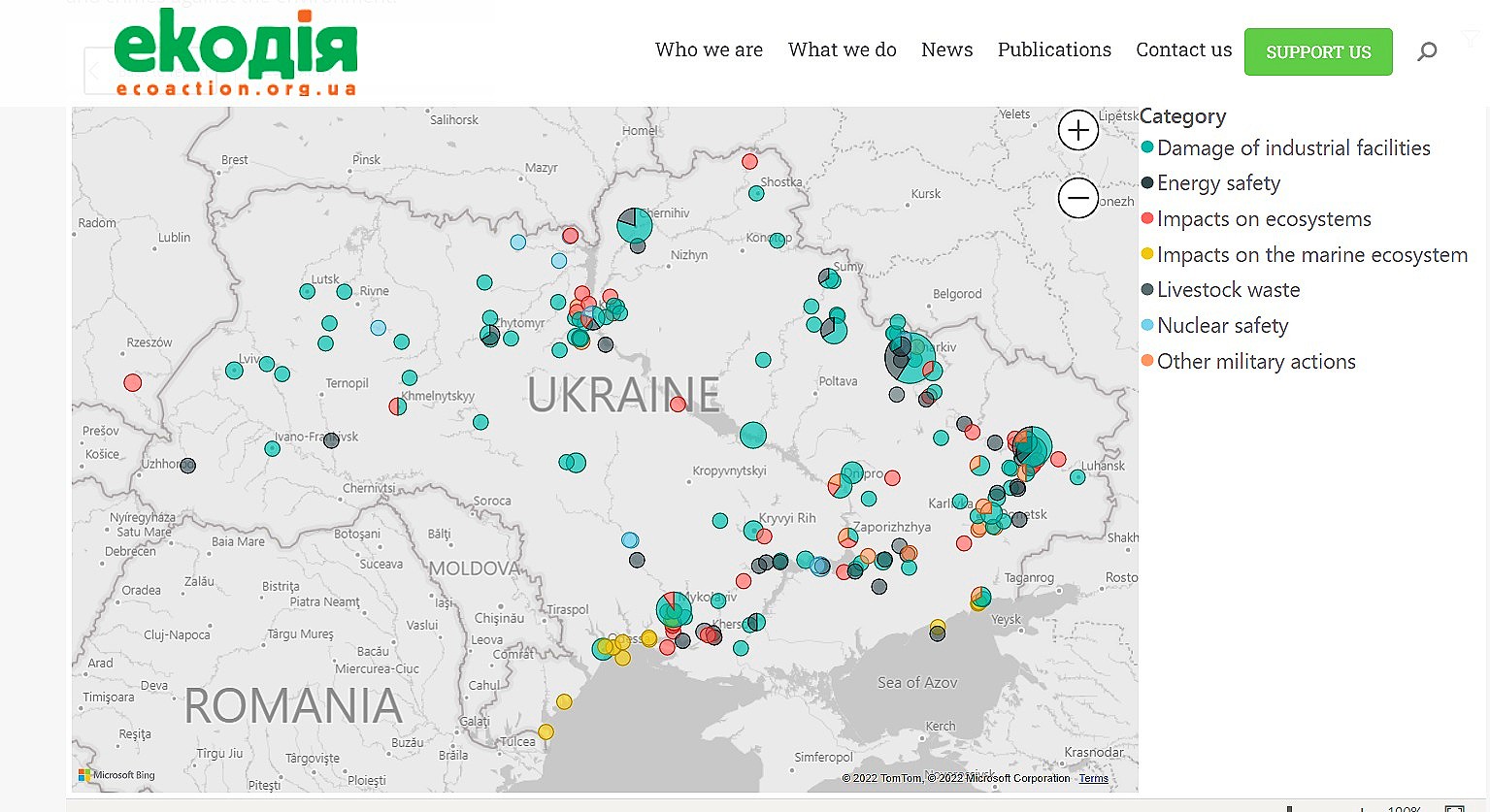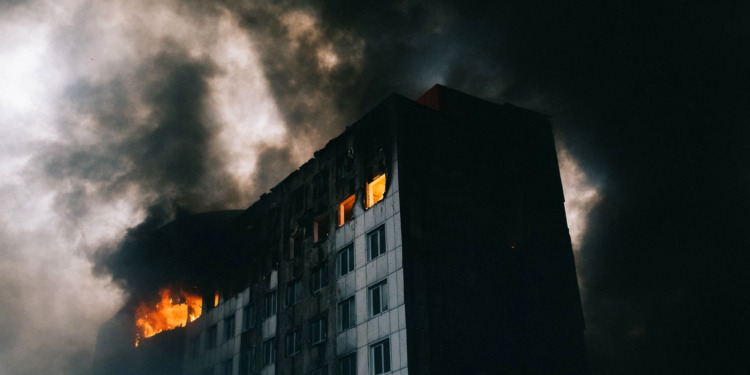Mental Health and One Health, the latter being the interface of human/animal/ecosystem health, address largely different scientific research, methods, public awareness and actions. Yet both face unanticipated challenges as a result of the Russian invasion, putting much greater burdens on an already overwhelmed Ukraine Government. External allies and donors can direct some of their human and financial resources to these non-military needs. Doing so will have multiple benefits, including helping to move Ukraine’s candidacy for European Union membership one step further.
Why should we address these two subjects together? What mental health and One Health have in common are supportive pronouncements by experts and public authorities, limited numbers of fully trained practitioners, and insufficient funding to do what is needed and known effective in crisis situations. Typically, neither are attentive to the other’s pursuits, scientific issues, and responses. This is partly because the disciplines have very different professional education and interests, and operational focus. But in this conflict situation, there are commonalities.
It would be a fool’s errand to try and deal with this vast terrain in a way other than by narrowing the setting and acknowledging limitations.
Regrettably, the ongoing Ukraine war is an occasion to observe a developed country in the twenty-first century dealing with a full-scale invasion by a more powerful neighbor. And an opportunity to gain insights on how war impacts both mental health and One Health in a highly industrialized society and this will help to identify first steps to address the issues raised.
Ongoing shelling has led to homes being destroyed with many living in bomb shelters without access to basic services. To help those in need, @UNHCRUkraine in this convoy, delivered tarps, jerry cans + solar lamps for over 10k families. https://t.co/t4QJrH4gl9 pic.twitter.com/c70FLpee9l
— UNHCR Ukraine (@UNHCRUkraine) June 27, 2022
Mental health affects
The long-term mental health consequences of war-related trauma are considerable. Over 5 million people fled Ukraine, while an estimated 7 million or more are internally displaced, this out of a pre-war population of 44 million. Those fleeing have been met with support inside Ukraine and in welcoming countries. But the capabilities of health systems, both within and outside Ukraine, were not equipped to handle mental illness of this nature or magnitude.
As to the Ukrainian health system itself, it has been remarkably resilient with many elements continuing to function under difficult conditions.
However, as the conflict continues, not only will the health physical infrastructure be further decimated, but health personnel already swamped with other than mental health priorities will be further stretched and increasingly less available.
Some relief has come from international organizations and international NGOs to strengthen and supplement of Ukraine’s health system.
The International Committee of the Red Cross sent 140 additional staff along with medical supplies, to bolster operations in more than 10 different locations in Ukraine. Médecins Sans Frontières swapped out its HIV and tuberculosis teams and sent in trainers and supplies to prepare hospitals to respond to mass casualty incidents. The WHO has been standing up an operations center in Poland to support humanitarian health delivery and surveillance operations in Ukraine.
But none of this was explicitly done with the objective of dealing with mental health.
We have learned from past and recent conflicts that post-traumatic stress affects both combatants and the many civilians who lost relatives, are wounded from shelling, had homes destroyed, or were forced to relocate elsewhere. Children are a particularly affected vulnerable group.
“The most important factor that determines how children are going to basically survive and go forward after a war experience is the nature of the adults who are caring for them,” he said. “If the parents and the caregivers are significantly traumatized, they can’t provide that sense of support. The adults’ needs become critically important to protect the children.”
But parents and adult caregivers are not always available nor knowledgeable about how best to provide the psychological support required for a child.
Trained mental health and accredited practitioners are needed, but like many places in the world, they are not plentiful in Ukraine, nor does the invasion allow either the time or place to fully train new professionals as might be done in peacetime. “Necessity is the mother of innovation” and in modern times the choice for such training may have to be distance learning as the only realistic option despite the obvious shortcomings when a teacher or trainer only has a digital presence.
One Health affects
I will address here in turn the One Health consequences of war on each component, human, animal, and environmental.
Human Health: Before the invasion, the Ukrainian health system had not done well in dealing with infectious disease outbreaks. It had not vaccinated major portions of its population against COVID-19, and outbreaks of other diseases were also not expeditiously addressed.
Against this backdrop, the ability of the system to face what are likely new and intensifying zoonotic public health challenges during conflict is not promising. Already there are real prospects of spikes in zoonotic diseases such as rabies.
Put in context, additional considerations make the provision of public health care far more challenging in a war zone, requiring much greater attention to the security and safety of healthcare facilities, workers, and supply lines. With less surveillance capability to identify early emerging diseases in animal populations at the source, diseases may go undetected until too late for the health system to act to contain its spread or provide treatment.
Animal Health: The war has significantly hampered professional veterinary services and surveillance capability. These are essential in identifying and dealing with infections that can jump from animals to humans, directly affecting people everywhere in the country, but in particular farm families and workers who rely on animals for their livelihood.
In urban areas where cats and dogs are valued for companionship, but during crisis and dislocation the prospects some will be uncared or abandoned are great. These pets will be left to fend for themselves, risk contracting rabies which in turn becomes a human health risk.
The Russian army continues to shell zoos and pet shelters. These photos show a rocket in the Mykolayiv Zoo, animals of the Kyiv Zoo and a shelter in Kharkiv. Countless animals have lost their owners. https://t.co/WQZUTBrBiu pic.twitter.com/VZuY9K90dg
— MFA of Ukraine
(@MFA_Ukraine) March 10, 2022
As George Packer recently wrote in The Atlantic:
“Animals die in large numbers in every war. Think of draft horses drowning in mud in the battlefields of France, or water buffalo machine-gunned from the air in Vietnamese rice paddies, or the tormented farm animals in Picasso’s Guernica. Their deaths are never counted in official casualty figures; almost all of them go unrecorded and unremembered. Animals are also targets in war, usually as a means to deprive an enemy of food and income. But in this war, animals have become Russian targets for no purpose other than sheer cruelty.” (bolding added)
Despite Ukraine’s veterinary services having been seriously affected by the invasion, like their human health counterparts, they have bravely continued as best they could.
Unfortunately, the number of trained animal health staff was and is limited and should have been complemented with a new team providing practical veterinary training to support qualified and experienced veterinarians and other animal welfare staff. This has not been possible and as a result, it has meant greater reliance on community engagement.
Ecosystem Affects: During the roughly six months of the Russian invasion, it has already caused significant damage to ecosystems, destroyed natural habitats of wildlife and contaminated agricultural land of this country considered the ‘breadbasket of Europe.’
Ukraine’s fertile soil is increasingly contaminated with heavy metals and other potentially poisonous substances leaking from missiles, military equipment and spent ammunition. And spilled fuel is polluting ground waters and ecosystems.
The Center for Environmental Initiatives, a Ukrainian eco-action group of experts and activists, has closely monitored the environmental damage caused by the Russian invasion from the beginning and built an interactive map of incidents across Ukraine, breaking them down by the type of damage, including nuclear and chemical pollution, dangerous livestock waste and degradation of land and marine ecosystems.

This is the first time in history there is a catastrophic Damoclean sword threatening possible radiation leakage resulting from any damage that might be sustained to the more than a dozen Ukraine nuclear powerplant sites.
The longer this conflict continues the more devastating to civilian ecosystems, with impacts exponentially compounding in the future.
For children living in war zones, there are ecosystem physical risks, such as breathing in smoke and ash from fires and blasts that can affect the nose and lungs and cause long-term medical issues. These fumes are also debilitating for adults and domestic animals as well.
Mental health and One Health commonalities
As done in Syria and Chechnya, Russian military doctrine and tactics consider legitimate targets major civilian urban and semi-urban centers, demolishing apartments, hospitals, and other buildings, destroying basic infrastructure and utilities, often far from the battlefield.
This is a form of psychological weaponization designed to create fear, unsettle, and demoralize the noncombatant population.
Despite the relentless attack, the Ukrainian national resolve has remained strong. Over time and integral to core sustained national resiliency will be addressing mental health and diseases of animal origin.
With so many urgent and immediate priorities demanding the government’s intensive attention, it is a hard “ask” to put these two subjects on its most urgent list.
But this need not be done without help from others; external supporters could significantly increase funding of related technical assistance and equipment, responding to government plans and requests.
An advantage here is these would not be explicitly linked to military needs and the conduct of the war. It would be assisting Ukraine in pursuing its efforts to obtain or reach full membership in the European Union.
Yes, it can be done…
Editor’s Note: The opinions expressed here by Impakter.com columnists are their own, not those of Impakter.com. — In the Featured Photo: Building burning after bombing, March 3, 2022 Kyiv, Ukraine Source: Photographs of Ukraine under attack, mnhhai Flickr










